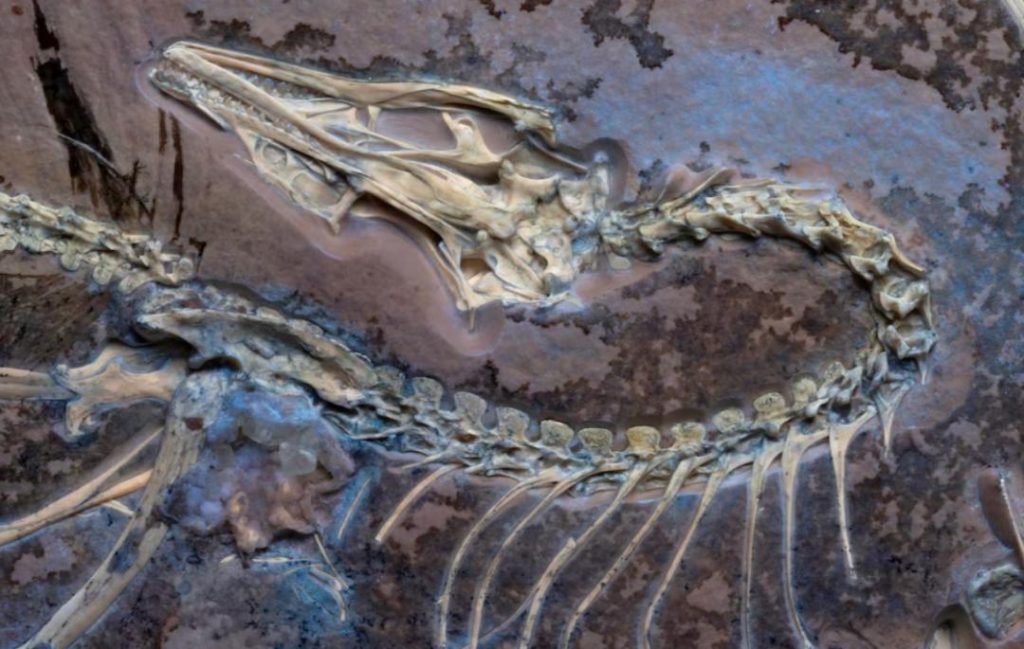
Feathered Fossils Provide Clues About How Early Birds Took Flight
For centuries, scientists have been fascinated by the evolution of birds, particularly the earliest species that took to the skies. One of the most iconic and well-preserved fossils of these ancient birds is the Archaeopteryx, which dates back to around 150 million years ago. Recently, a remarkable discovery has been made by scientists at the Field Museum of Natural History in Chicago, which has provided new insights into how these early birds first took flight.
The study, published in the journal Nature, reveals that the Archaeopteryx fossil, unearthed in Germany, contains a unique feature that has never been seen before in this species. The fossil, which is one of the most complete and best-preserved of the 14 known Archaeopteryx fossils since 1861, contains specialized feathers called tertials on both wings. These feathers were previously unknown in Archaeopteryx and are a key innovation that allowed early birds to generate lift and sustain flight.
The discovery of these tertials is a significant finding because it provides evidence of the transitional phase between non-flying and flying animals. The Archaeopteryx is a crucial fossil in understanding the evolution of flight, as it retains many characteristics of both dinosaurs and modern birds. The presence of tertials on its wings suggests that early birds were experimenting with different flight strategies before eventually developing the complex wing structures that characterize modern birds.
So, how did these early birds first take flight? The answer lies in the unique structure of their wings. The Archaeopteryx had a combination of reptilian and avian characteristics, including teeth, a long bony tail, and claws on its wings. However, it also had feathers and wings that were similar to those of modern birds. The presence of tertials on its wings suggests that early birds were using a different type of wing motion to generate lift and propel themselves through the air.
The scientists behind the study used advanced imaging techniques, including computed tomography (CT) scans and X-ray fluorescence (XRF) scans, to analyze the fossil in unprecedented detail. They found that the tertials were made up of a unique combination of feathers and a tough, leathery skin called the “epidermis.” This skin was likely covered in tiny hooks and barbs, which helped to grab onto the feathers and provide additional lift.
The discovery of these tertials has significant implications for our understanding of the evolution of flight. It suggests that early birds were experimenting with different wing structures and motions to generate lift and sustain flight. The presence of tertials on the Archaeopteryx fossil provides evidence that these early birds were using a different type of wing motion to generate lift, which was likely more primitive and less efficient than the complex wing structures that characterize modern birds.
The study’s lead author, Dr. Julia Clarke, explained the significance of the discovery, “The presence of tertials on the Archaeopteryx fossil provides a unique window into the evolution of flight. It shows that early birds were experimenting with different wing structures and motions to generate lift and sustain flight. This is a crucial step in understanding how birds evolved from non-flying to flying animals.”
The discovery of these tertials is a testament to the importance of continued research into the fossil record. The study of fossils like the Archaeopteryx provides a unique window into the past, allowing scientists to reconstruct the evolution of life on Earth. As we continue to uncover new fossils and learn more about the ancient world, we are constantly reminded of the incredible diversity and complexity of life on our planet.
In conclusion, the discovery of specialized feathers called tertials on the wings of the Archaeopteryx fossil provides new insights into how early birds first took flight. The presence of these feathers suggests that early birds were experimenting with different wing structures and motions to generate lift and sustain flight. This is a crucial step in understanding how birds evolved from non-flying to flying animals, and it highlights the importance of continued research into the fossil record.
Source:






